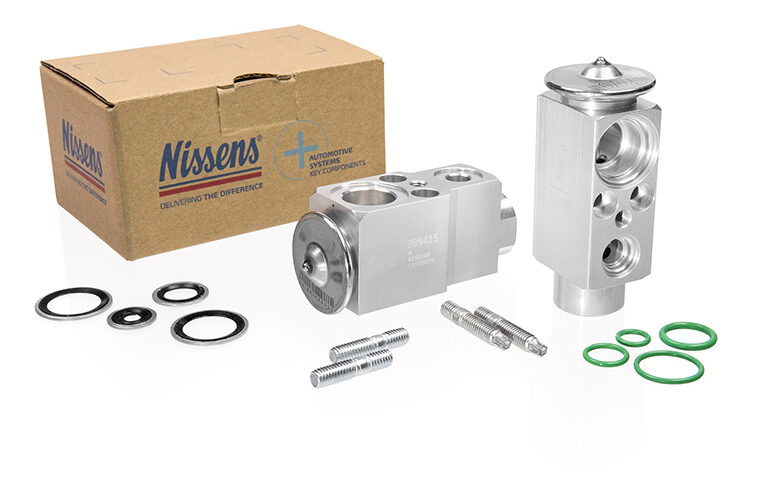Through a technical data sheet and online communication, Nissens has put together a comprehensive set of resources to enable technicians to identify the issues and rectify the problems that a faulty TXV can cause in the AC system.
What is TXV and what does it do?
It’s a precise metering device that controls the amount of refrigerant released into the evaporator and separates the high-pressure and low-pressure sides of the AC loop, so is one of the major control components of an AC system.
The TXV is pre-set to maintain what’s known as superheat conditions within the evaporator and by this, to ensure the system’s optimal operation and output, matching the existing need for cold air production.
In each AC system, the TXV is factory pre-set to maintain the right superheat condition at the evaporator outlet and, therefore, to ensure the system’s optimum operation.
Besides the primary function of the refrigerant’s metering and flow regulating function within the AC cycle, the TXV also has importance for the AC compressor’s lifespan.
Possible TXV problems will quickly disable the required refrigerant flow control in the AC system and set its working parameters out of the proper balance. Consequently, the system output is unsettled, and it cannot cool the cabin air as needed. Equally, this exposes the AC compressor to an excessive workload, a shortage of lubrication, or flooding, which can lead to severe damage.
Delay in the valve reaction or improper, unbalanced metering, along with the valve being stuck in an open or closed position, are among the most common TXV malfunctions.
Often, severe compressor failures can be avoided by considering the TXV during AC system troubleshooting. So, it’s wise to pay extra attention to the valve if the original compressor is seized and a replacement is needed.
Top tips
- Learn the system design before troubleshooting the system to find potential TXV problems.
- Perform extended AC system diagnostics.
- Superheat measured at the evaporator’s outlet can help to conclude whether the TXV, and therefore the system, is operating to its optimum.
- Along with other parts, always replace the TXV when carrying out an AC compressor replacement.
- Remember to flush the AC system before fitting the new AC compressor and replacement TXV.
- A nitrogen-based pressure test and a long-term vacuum are obligatory before recharging the system, as they help eliminate moisture remaining in the loop.







